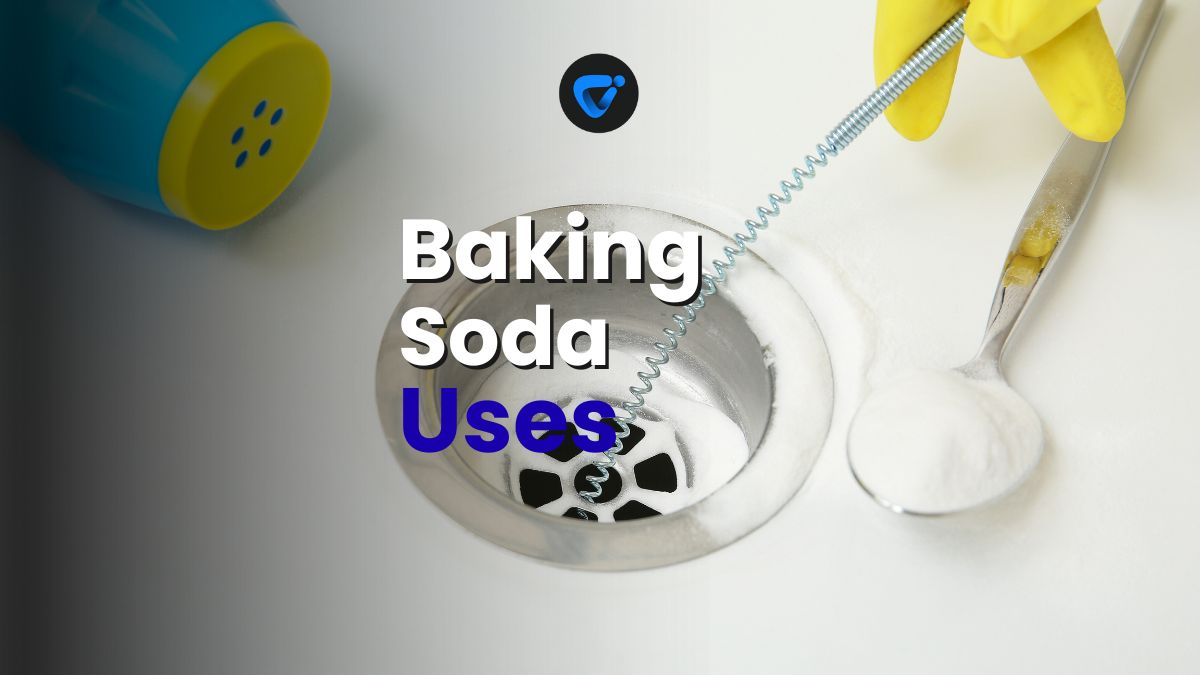
The faint, musty scent clinging to corners or closets is no mystery—it’s mold. Many households become surprised when mold appears, despite their best cleaning efforts. Integrating natural mold prevention methods like tea tree oil into daily routines offers a straightforward, accessible upgrade over synthetic sprays.

Composting Basics for Everyday Kitchen Scraps
Turn scraps into soil! Learn composting basics to recycle kitchen waste and create nutrient-rich compost at home.
Addressing mold before it takes hold helps maintain air quality, reduce allergy triggers, and preserve surfaces. Tea tree oil is revered for its ability to naturally discourage mold growth in a way that fits right into household cleaning practices. It’s not just safe for your space, but it’s effective and easy too.
Dive into this micro-guide to learn practical ways to deploy tea tree oil for natural mold prevention. Every section is packed with actionable steps, comparisons, and specific scenarios—whether you’re dealing with a damp bathroom, old windows, or just want to set a mold-resistant foundation at home.
Pinpointing Mold Trouble Spots and Getting Proactive
Identifying potential mold habitats helps you target natural mold prevention where it matters—think high-moisture areas, hidden crevices, and spots with poor airflow. Fixing these hotspots first sets the stage for an effective anti-mold plan.
Tea tree oil’s antifungal properties work best when blended with regular cleaning habits. Consider checking shower caulks, behind appliances, or along window sills, and pairing your inspections with a natural mold prevention regimen.
Visual Clues Reveal Mold’s Favorite Hideouts
You’ll notice black, green, or white specks clustering on tile grout, wood trim, and inside sink cabinets. Mold flares up wherever moisture lingers and light is low. Look closely: even well-maintained homes have these micro-pockets, so trust your eyes as your first tool.
Moldy odors are reliable warnings. If you spot discoloration, poke the spot with a cotton swab—soft, spongy resistance means it’s time for natural mold prevention involving both scrubbing and oil-based sprays. Work with gloves if doing a full sweep.
Angle a flashlight along baseboards at dusk—a slight shadow or fuzzy halo flags what daylight hides. This method highlights buildups without needing to move heavy furniture. Add discovered areas to your monthly checklist for targeted attention.
Pinpoint Moisture Sources with a Simple Checklist
Run through a mental checklist: has the bathroom exhaust fan worked lately? Did a window get left cracked during a rainstorm? Spills under sinks and HVAC drip pans are common culprits—wipe down these places regularly and consider labeling leaky spots to monitor changes.
When you dry laundry indoors, condensation clings to walls, making closets and corners more vulnerable. Place a dehumidifier nearby if you notice persistent dampness, and spray tea tree oil mixtures after every drying session as a preventive habit.
Note the sequence: inspect, clean, then treat. Fumbling the order can trap moisture, reducing the effect of natural mold prevention techniques. Checked surfaces allow tea tree oil to interact directly with mold, not just the layer of dust on top.
| Mold Hotspot | Why at Risk | Check Frequency | Next Action |
|---|---|---|---|
| Shower Tiles | Constant moisture, grouted joints | Weekly | Spray diluted tea tree oil, scrub if visible growth |
| Window Sills | Condensation, hidden corners | Monthly | Wipe dry, spray preventive mix |
| Behind Appliances | Low airflow, unnoticed drips | Quarterly | Move appliance, deep clean, apply oil solution |
| Closets | Poor ventilation, trapped humidity | Bi-monthly | Check corners, spray, keep doors ajar for airing out |
| Basement Walls | Seepage, stagnant air | Seasonally | Inspect, spray, use dehumidifier |
Tea Tree Oil Mixes: Recipes, Techniques, and Real-Life Uses
Creating and using tea tree oil blends delivers a flexible approach to natural mold prevention. Mixing it right, choosing the best carriers, and knowing when to reapply can make all the difference in results you see and smell.
Personalize your mix by testing ratios: a few drops in a cup of water for daily spritzes, or a stronger blend for tough spots. Making small fresh batches encourages regular use—and keeps the oil potent.
Simple Blend, Big Results
Start with 10 drops of pure tea tree oil in 1 cup of water and pour it into a clean spray bottle. Shake before each use since oil floats, ensuring every spritz gets an even hit. Use on tile, tubs, and fridge seals after regular cleaning sessions.
- Shake the bottle every use: oil and water separate fast, so shaking matters for even coverage on all surfaces you spray.
- Label clearly: jot “Tea Tree Mold Prevent” on tape so no one mistakes the spray for something else if left on the counter.
- Apply after drying surfaces: moisture dilutes oil fast—dry with a towel before spraying for best result in natural mold prevention.
- Test on small spots first: while tea tree oil is gentle, old finishes may react, so patch-test tile grout or painted wood before wide use.
- Refresh monthly: even unopened bottles of mixed spray lose potency over time—swap in a new batch every few weeks for best mold protection.
Try two strengths: a daily light spritz for prevention, and a stronger solution whenever visible mold reappears. Both keep tea tree oil’s antifungal benefits working in tandem with your routine.
Heavy-Duty Blend for Stubborn Spots
For black streaks or persistent mildew, stir 1 teaspoon of tea tree oil into 1 cup of vinegar. This blend punches through tough colonies and clings longer on vertical tile or grout. Wear gloves and don’t rinse—it works as it dries for extended natural mold prevention.
- Ventilate the room: strong blends can linger, so open a window or run a fan after spraying tight spaces and let the scent fade naturally.
- Use a toothbrush for grout: work the solution into grooves, then wipe away residue after an hour—this removes roots as well as visible streaks.
- Dedicated cloths only: reserve a rag just for these tasks as the scent lingers. Always launder cloths right after use to avoid accidental spread.
- Store out of sunlight: keep your bottle in a cupboard, since tea tree oil breaks down faster under UV light, reducing antifungal potency.
- Keep extra gloves handy: oil and vinegar can dry out skin—always slip on rubber gloves for big projects as a simple protective habit.
Apply this solution once a week where ongoing struggle with mold or mildew happens, especially in humid zones—your nose will notice the difference as air freshens up again.
When Timing and Consistency Keep Mold Away for Good
Maintenance matters most for real, lasting natural mold prevention. Most mold regrowth happens when routines slip, letting new spores settle. Setting a schedule for cleaning and treatment outweighs any single strong product in effectiveness.
Analogous to regular exercise for health, consistency in anti-mold habits spells success. “I’ll do it next week” turns into a cycle of reappearance—routines need to be built small and steady for results to last.
Building Your Anti-Mold Ritual
Pair your cleaning routine with tea tree oil spraying: after you wipe kitchen counters, spritz tea tree oil blend on backsplashes every Tuesday. This piggybacks new habits onto things you already do each week without extra effort.
Schedule a monthly “mold patrol” at home. Set an alert: check showers, closets, and trunks of cars (fabric mats love to trap dampness). Spraying and wiping with tea tree oil solution takes only a few minutes, but the payback is weeks of protection.
Seasonal transitions trigger mold waves. Mark the first humid week of each season as a reminder to check vulnerable spots—swap air filters, and spray window sills and baseboards. This small action aligns your plan with changing weather.
What to Do When Mold Reappears
Catch regrowth early; it’s easier to treat a small spot than a wall patch. If you spot new mold, spray tea tree blend immediately, wait an hour, then scrub with a stiff brush. No need for a full-scale cleaning blitz if you address it promptly.
Listen for household complaints like “this closet smells weird again.” Treat the odor as seriously as a visible patch. Take five minutes to remove contents, then air out and treat the surfaces with tea tree oil for a dual attack on spores and scent.
If a spot persists after two rounds of treatment, check for leaks or underlying water intrusion. No amount of spraying can replace tackling the true source—fix leaks, dry thoroughly, and then resume using preventive blends to win the battle.
Smarter Everyday Habits That Amplify Tea Tree Oil’s Power
Mold rarely thrives without help from human habits. Small behavior tweaks—like how you dry towels or ventilate spaces—can amplify or undermine your natural mold prevention efforts. Adjust one or two habits, and you’ll feel the results in drier air and fresher rooms.
Tea tree oil works best when it partners with basic strategies that reduce mold’s fuel: standing water, humidity, and trapped dirt. Tweaking routines makes every spray you use more effective.
- Hang towels after each use: draping them spread out dries fibers evenly, instead of letting them bunch and stay damp, which promotes mold. Bonus: add a tea tree oil spritz after the final load on laundry day for added fragrance.
- Leave the bathroom door open for 30 minutes after showers: this improves airflow, and a quick pass with a tea tree solution on tiles afterward traps fewer spores due to decreased moisture.
- Switch to a squeegee routine: wiping down shower glass or tiles after use cuts drying time in half. Follow by misting the area with tea tree oil blend for a twice-as-fast dry-down, discouraging new growth.
- Move furniture away from walls by 2 inches: this creates a tiny air gap that reduces condensation and allows tea tree oil sprays to reach more surface area in hidden corners for full-coverage natural mold prevention.
- Clean pet bedding and litter trays with a diluted tea tree oil blend: pets track moisture into hidden corners. Treating their zones weekly helps cut off one of mold’s favorite hideouts.
Combine these steps with regular spraying, and you’ll notice not just less mold, but fresher rooms, faster-drying towels, and fewer musty odors hanging around moist spaces.
Scenario-Based Solutions: Tea Tree Oil in Real Home Settings
When real life throws leaks, spills, or steamy summers your way, you need strategies tailored to your home. This section provides scenario-based scripts that you can copy, so you always have a plan for natural mold prevention.
Situational responses blended with tea tree oil won’t just patch the problem—they’ll help make your home truly inhospitable to recurring mold. Consider these scripts as ready-to-use playbooks.
Old Home, Persistent Mold
“Every fall, mold pops up behind my washing machine.” Solution: Move the machine, wipe with a vinegar and tea tree mix, then install a vented mat beneath. Finish by misting each time you do laundry. This sustained approach blocks regrowth that flourishes in humid corners.
When baseboards stain or padding smells off: Check for leaks, dry with a microfiber towel, and spray two rounds of tea tree oil in one-hour intervals. If odor lingers, set a small fan to boost airflow, keeping the area dry and unwelcoming to spores.
Finish by recording the date of treatment on your phone or a sticky note next to the trouble spot. This keeps your natural mold prevention rotation on track, so you catch early recurrence before it takes hold again.
After Floods or Major Spills
Post-flood cleanup requires quick thinking: strip soaked fabrics, run fans nonstop, and spray all surfaces with strong tea tree and vinegar blend. Work especially into joints between floorboards, windowsills, and under rugs for a two-pronged defense.
Check affected spots morning and night for three days—touch the area for dryness and look for new spots. Continue daily spraying for at least a week, incorporating it as part of your mold patrol during post-flood repairs or after major leaks.
Finish with a walk-through: Take a deep inhale for any return of musty odor, then treat as needed. Early, aggressive natural mold prevention pays off by breaking the cycle before mold can rebound.
Big Wins and Small Steps: Tea Tree Oil’s Impact on Home Wellness
Nailing natural mold prevention with tea tree oil is a series of small, consistent actions rather than a single fix. Combine visual checks, proper mixing, and habit tweaks for robust protection. Each method builds on the last, turning everyday cleaning into a mold-proofing routine.
When homes stay mold-free, indoor air becomes fresher and allergy symptoms ease. Integrating tea tree oil into cleaning habits uplifts long-term wellness, not just surface appearance, making your space feel more comfortable and inviting for everyone living there.
Take the time to experiment with blends, timing, and routines that fit your household. Share simple strategies with friends or family to strengthen your community against recurring mold threats. Natural mold prevention is most powerful as an everyday practice—not just a crisis measure.
Frequently Asked Questions
Begin by mixing ten drops with one cup of water in a spray bottle. Shake well before each use, and spray onto cleaned, dry surfaces in high-risk areas such as bathrooms, basements, and closets. Use weekly for best results.
Tea tree oil should be diluted and not ingested. Keep homemade sprays out of reach and always ventilate the room after application. If unsure, use lower concentrations around sensitive individuals or consult your family physician.
You’ll see results in 30–60 minutes on light growths when applied directly. For severe mold, multiple applications may be needed. Tea tree oil offers a continuous, preventive effect when used regularly, while commercial products often work rapidly but can leave harsh residues.
Tea tree oil can reduce and discourage new growth, but deep stains might require scrubbing with a baking soda paste or professional treatment. Always test a small area first. Combine with regular surface cleaning for visible improvements over time.
Store your spray bottle in a cool, dark cupboard away from sunlight. Make a new batch monthly for maximum potency. Avoid keeping mixed solutions on open windowsills or in hot areas, as this will degrade both the oil and its mold-preventing potential quickly.

Baking Soda Magic: 10 Surprising Cleaning Uses
Unlock the power of baking soda! Discover 10 surprising ways to clean, deodorize, and brighten your home naturally.


